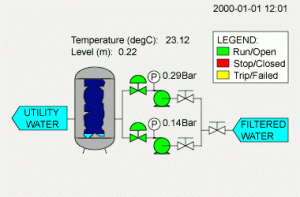The ROI of Social Media
 Social Media by know is a very much over-used term, specifically by those who don’t seem to use it much (just like Web 2.0 – crinch!). Almost every online agency now touts social media as one of their specialties. But it seems that there is very little actual planning and measuring going on; no accountability and no ways to measure ROIs is offered.
Social Media by know is a very much over-used term, specifically by those who don’t seem to use it much (just like Web 2.0 – crinch!). Almost every online agency now touts social media as one of their specialties. But it seems that there is very little actual planning and measuring going on; no accountability and no ways to measure ROIs is offered.
Decision makers that ultimately give the go-ahead to invest in social media marketing are (or: should be!) concerned with the bottom line. Just like any other investment, it is essential that a social media strategy includes mechanisms to assess actual business value / ROI. This can be in form of a value placed on increased product/service awareness, actual sales (leads) and/or cost savings due to a reduction in support staff due to social media tools. ROI can only be obtained if there is a stated goal for the social media campaign. Regardless of how value is determined, social media should be validated just like any other marketing channel.
It is encouraging is that more companies are looking more seriously at the challenges and opportunities of social media participation. Others understand that social media is not a destination, but rather an indication of consumer behaviors aided by technology. Successful social media marketing is not about the tools, it is about the people involved; remember social media is about the C’s: Conversation, Connections, Community, Consumer, Control, Creative, Collaboration and Content.
Participate in Poll: Are you measuring Social Media ROI?
Email me if you have questions on how to measure Social Media ROI.
 Social media are media for social interaction, using highly accessible and scalable publishing techniques. Social media uses web-based technologies to turn communication into interactive dialogues. Andreas Kaplan and Michael Haenlein also define social media as “a group of Internet-based applications that build on the ideological and technological foundations of Web 2.0, which allows the creation and exchange of user-generated content.” Businesses also refer to social media as consumer-generated media (CGM). A common thread running through all definitions of social media is a blending of technology and social interaction for the co-creation of value.
Social media are media for social interaction, using highly accessible and scalable publishing techniques. Social media uses web-based technologies to turn communication into interactive dialogues. Andreas Kaplan and Michael Haenlein also define social media as “a group of Internet-based applications that build on the ideological and technological foundations of Web 2.0, which allows the creation and exchange of user-generated content.” Businesses also refer to social media as consumer-generated media (CGM). A common thread running through all definitions of social media is a blending of technology and social interaction for the co-creation of value.
Social media can take many different forms, including Internet forums, weblogs, social blogs, microblogging, wikis, podcasts, photographs or pictures, video, rating and social bookmarking. By applying a set of theories in the field of media research (social presence, media richness) and social processes (self-presentation, self-disclosure) Kaplan and Haenlein created a classification scheme for different social media types in their Business Horizons article published in 2010. According to Kaplan and Haenlein there are six different types of social media: collaborative projects, blogs and microblogs, content communities, social networking sites, virtual game worlds, and virtual communities. Technologies include: blogs, picture-sharing, vlogs, wall-postings, email, instant messaging, music-sharing, crowdsourcing, and voice over IP, to name a few. Many of these social media services can be integrated via social network aggregation platforms.







